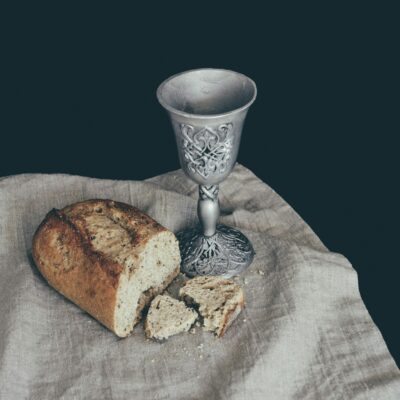This article is part of a series. To read the whole series, click here.
The Lord’s Supper has been understood in diverse ways throughout church history, with different traditions offering distinct perspectives on Christ’s presence in the sacrament. Four primary views—Roman Catholic (transubstantiation), Lutheran (consubstantiation), Zwinglian (memorialism), and Reformed—shape the theological landscape, each addressing how Christ is present, if at all, in the bread and wine.
The Roman Catholic view, known as transubstantiation, emerged in the 11th century AD, formalized by medieval theologians using Aristotelian philosophy. It holds that the substance of the bread and wine transforms into the actual body and blood of Christ, while the accidents (appearance, taste, texture) remain unchanged. Thus, the elements become Christ’s physical body, though they still look and taste like bread and wine. This belief underpins practices like venerating the Eucharist, as the elements are considered Christ Himself. For example, if crumbs fall or wine spills, they are treated with utmost reverence, reflecting the literal presence. Transubstantiation emphasizes a miraculous change, viewing the Supper as a re-presentation of Christ’s sacrifice, which Reformed theology critiques as undermining the once-for-all nature of Christ’s atonement (Hebrews 7:27).
The Lutheran view, articulated by Martin Luther in the 16th century AD, is often called consubstantiation, though Lutherans prefer terms like “sacramental union.” Luther taught that Christ is truly present “in, with, and under” the bread and wine, without the elements changing their substance. Unlike transubstantiation, the bread remains bread, but Christ’s body and blood coexist with it. Luther emphasized Christ’s real presence to affirm the Supper’s spiritual significance, rejecting what he saw as the magical transformation of Roman Catholicism. This view seeks a middle ground, maintaining Christ’s presence while avoiding a complete change of the elements.
The memorialist view, associated with Ulrich Zwingli in the 16th century AD, holds that the Lord’s Supper is a symbolic act of remembrance. Christ is not present in the elements; the bread and wine are mere symbols of His body and blood, prompting believers to reflect on His death. Common in many Baptist and non-denominational churches, this perspective focuses on the believer’s act of remembering Christ’s sacrifice, often emphasizing personal introspection over divine encounter. Critics argue this view risks reducing the Supper to a self-focused exercise, diminishing its role as a means of grace where Christ actively communes with His people.
The Reformed view, as held by John Calvin and articulated in Reformed confessions, affirms Christ’s real presence in the Lord’s Supper, but spiritually, not physically. Christ’s glorified body remains in heaven at the right hand of the Father (Acts 7:56), yet His divine nature is truly present through the Holy Spirit. Believers partake of Christ by faith, receiving His benefits—forgiveness, strength, and communion—as they eat the bread and drink the wine. The elements remain bread and wine, serving as signs and seals of God’s covenant promises. This view avoids the physicality of transubstantiation and consubstantiation, as well as the emptiness of memorialism, emphasizing a spiritual encounter with Christ. The Supper is a high act of worship, distinct from other moments of God’s presence, where faith is the instrument of receiving Christ’s grace.
These views reflect differing understandings of Christ’s presence and the Supper’s purpose. The Roman Catholic and Lutheran perspectives prioritize a tangible presence, though in different ways, while the memorialist view focuses on remembrance. The Reformed view balances Christ’s real spiritual presence with the centrality of faith, aligning with the Westminster Confession’s teaching that the Supper is a means of grace instituted by Christ. Understanding these perspectives enriches appreciation of the Lord’s Supper as a profound act of worship that has shaped Christian theology for centuries.
This is the third in a series on the Lord’s Supper. The next article will explore its connections to Passover and practical implications for worship.



